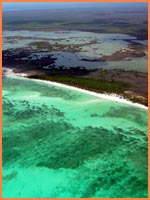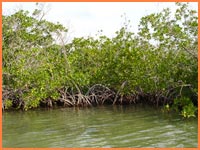|
The lagoons in the north of Cozumel have been made a special protected area under Mexican law and international treaty, announced Ernesto Enkerlin, Director of Mexico's National Commission for Protected Natural Areas (CONANP) last week. The area will now be a "Ramsar" site, he said, during an event for World Wetland's Day at the Autonomous University of Baja California in Ensenada, Mexico. |
 Outstanding natural beauty. |
The name "Ramsar" comes from the International Convention on Wetlands, signed in Ramsar, Iran, in 1971.
The treaty provides the framework for national action and international cooperation for the conservation and wise use of wetlands and their resources.
 Mangroves around the lagoons. |
Enkerlin said that Cozumel's northern lagoons were one of 11 new Ramsar sites in Mexico. In total, Mexico now has 123 Ramsar sites, the second most out of all the 158 countries and territories that have signed the convention. |
The total area of all the Ramsar wetland sites in Mexico is some 9.75 million hectares (24.1 million acres).
The 11 new Mexican Ramsar sites are:
1. Lago de Chapala, Jalisco.
2. Anillo de Cenotes, Yucatán.
3. Presa de Atlangatepec, Tlaxcala.
4. Humedales de Bahía Adair, Sonora.
5. Baño de San Ignacio, Nuevo León.
6. La Mintzita, Michoacán.
7. Alberca de los Espinos, Michoacán.
8. Los Humedales de Yavaros-Moroncarit Sonora.
9. Los Manglares Norte, Cozumel Quintana Roo.
10. Lago San Juan de los Ahorcados, Zacatecas.
11. Lagunas Santa María Topolobampo, Sinaloa.
For more information about protecting wetlands worldwide, visit the Ramsar Convention website. See our Tourist Information section for information about the Cozumel Marine Park.
Related News:New Nature Reserve Discussed.
Trump Plan Still Alive.



